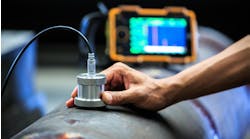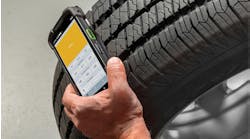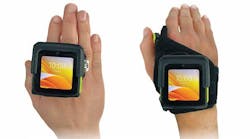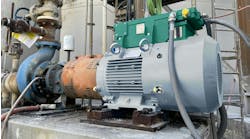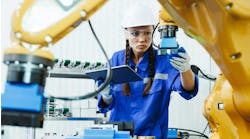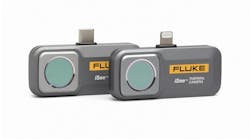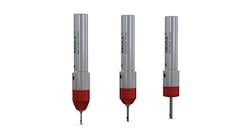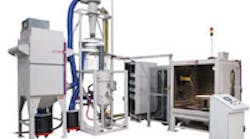The Guyson Model RB-10 robotic shot-peening system combines a robotic nozzle manipulator with a rotary table pressure-blast machine, for precision control of surface treatment.
Most of the robotic systems adapted for forging operations are keyed to their ability to carry heavy loads, endure high heat, and absorb high-pressure blows. But, there are numerous applications for robotics for other essential functions in a forge plant. Guyson Corp. this year introduced a pressureblast shot-peening cell designed around a “7-axis” robotic unit, an integrated design that Guyson developed for technical surface treatment of gears and aerospace components. However, the supplier emphasizes that its Model RB-10 will comply with demanding process specifications and function effectively with a wide variety of dissimilar components.
The 60 × 60 × 60-inch blast cabinet is coordinated with a 6-axis robot, such as the Fanuc M10iA, as a blast nozzle manipulator. FANUC Robotics’ M-10iA/10S was introduced earlier this year for machine builders and system integrators seeking to reduce space requirements. The arm can be mounted to a floor or ceiling or at an angled orientation to save space for other operations or peripheral equipment. The robot’s hollow arm has integrated fluidics, signal and electrical cabling, so there’s less possibility of cable snagging and/or breaking.
By routing cables through to the wrist flange, Fanuc maximizes full tool rotation without speeding up programming and ensuring longer cable life. “The high speed and inertia of the M-10iA/10S together with its 1,098 mm reach make multi-task applications … straightforward,” Fanuc explained.
In the Guyson Model RB-10, the robot is paired with a rotary table that has a diameter of up to 52 inches and is servomotor-driven to be controlled as a seventh axis of robotic motion. Locating hardware is provided to allow interchangeable component-holding fixtures to be positively positioned on the turntable, with repeatability.
During the shot peening cycle, the orientation of the component and the motion of the robotic nozzle manipulator are synchronized to follow a programmed tool path, tracking the contours of parts yet constantly, accurately maintaining the required angle of shot impingement, the correct offset of the peening nozzle from the target surface, and the right dwell or surface speed to control the cold working process.
The peening media del ivery system includes an A.S.M.E.-certified pressure vessel of 3.5-ft3 capacity fitted with high and low shot level sensors, a 3-ft3 media storage hopper that automatically adds shot when a low level is detected, and an electronic shot-flow controller to maintain the correct blast pressure and shot-flow rate specified for the shot-peening process.
The installation is outfitted with a cyclone separator to extract process dust. There is a shot reclamation system, too, including a vibratory screen classifier that ensures only shot of specified size is delivered, as well as a spiral separator to remove any peening shot that is not perfectly spherical.
If a manufacturer must conform to industrial specifications, such as SAE’s AMS 2432 standard, Guyson offers a SCADA controls package that works with a customdesigned touchscreen HMI, so the operators can collect, store, and verify the data of all critical process parameters throughout the shot-peening process.
Related Articles
